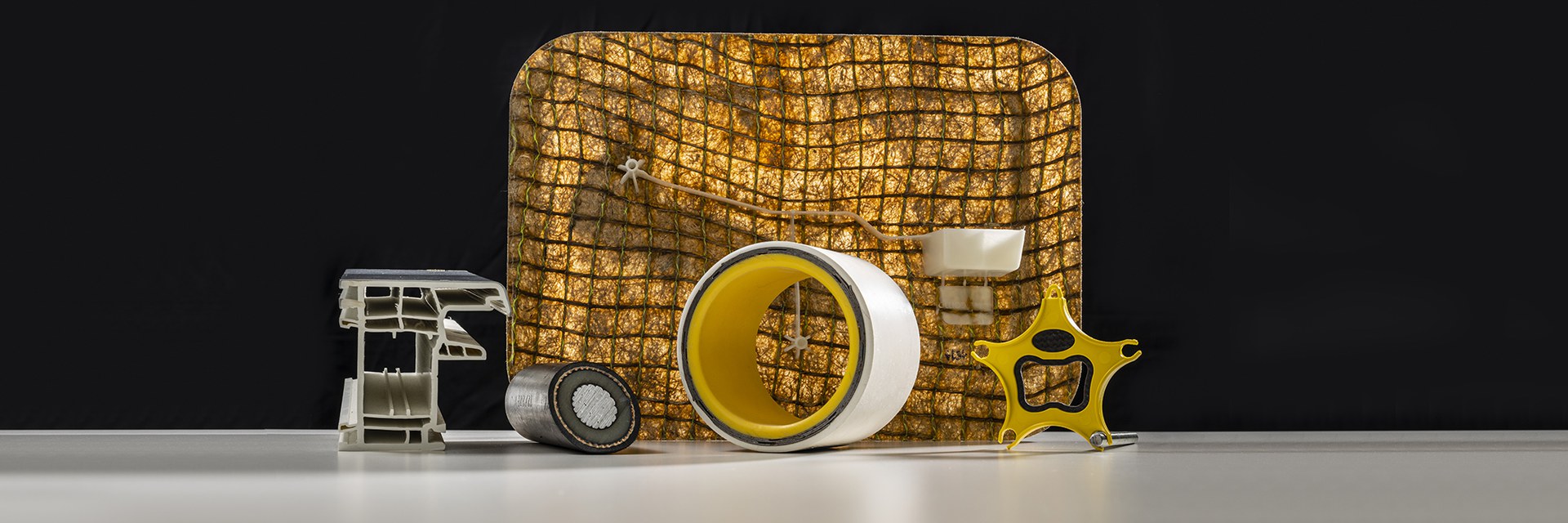
Immobilisation of biomolecules for the detec-tion of the stress hormone cortisol
Nutrix AG is a Swiss MedTech company that aims to improve the current state of digital health monitoring. For the development of high-tech sensors for home use, Nutrix is collabo-rating with Dr Sonja Neuhaus and Dr Alok Goel from the Institute of Polymer Nanotech-nology (INKA) at the University of Applied Sciences Northwestern Switzerland (FHNW).

Figure 1: Immobilised biocomponents on a polymer substrate (grey).
With easy-to-use biosensors, people should be able to determine relevant values independently at home. To be able to offer non-invasive and painless methods, the biomarkers are detected in saliva and not, as usual, in blood. To produce a biosensor, specific bioreceptors have to be attached or immobilised on polymer surfaces. If the biomarker belonging to the receptor binds, the biosensor reacts with an easily measurable electrochemical signal.
Among other things, the functionality and stability of the bioreceptors are of central importance for the reliable use of a sensor. However, their direct immobilisation on a polymer is very challenging. The surface functionalisation group at INKA has developed a technology to bind enzymes and other biological components on polymer surfaces. Particular emphasis is placed on the sensitivity of the enzymes and the possible loss of activity due to the effects of heat, irradiation with light or contact with oxygen.

Figure 2: The model enzyme is immobilised on an electrode.
Cortisol is secreted when the body reacts to stress. By measuring cortisol levels, it is possible to assess whether and to what extent someone is under physical or emotional stress. Real-time monitoring over a longer period of time in particular can be used to take countermeasures and prevent chronic stress and stress-related illnesses. However, the currently available cortisol detectors require the assistance of a specialist, are not user-friendly and do not provide real-time results. Nutrix wants to revolutionise the market with a fast and reliable home measurement system. Nutrix and INKA are working together for the first time to implement this idea within the framework of an Innocheck funded by Innosuisse.

Figure 3: Colour detection of enzyme activity directly after immersion (left) and after 15 minutes (right).
In the first step, the project team developed parameters for the reliable and reproducible immobilisation of functional enzymes on polymer surfaces. Subsequently, a model enzyme was immobilised on the surface and its activity was confirmed with colour detection (Figures 2 and 3).
The findings to date are now being used to realise sensors for the detection of cortisol. Once the feasibility is proven, we will apply for an Innosuisse implementation project with the aim of developing a market-ready product.
We thank Nutrix for the fruitful and very exciting collaboration. We thank Innosuisse for the financial support of this project.
